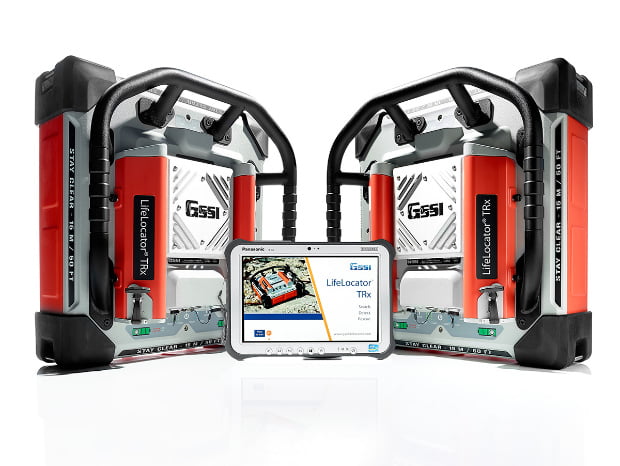What is UWB?

Ultra-wideband (UWB) signals have been used for decades in geophysical applications. When UWB signals are used in geophysical instruments, the sensor is moved to detect and map underground objects. When used in GSSI’s LifeLocator®, the sensor is stationary to detect motion and breathing characteristics.
UWB signals are generally defined as electromagnetic transmitters whose bandwidth is at least 25% of the nominal center frequency. UWB operates in the time domain; almost all other transmitters operate in the frequency domain.
Geophysical instruments are moved across a surface and transmit very short bursts of electromagnetic energy into the ground. Reflections from buried objects are received at another antenna. This technology can detect targets such as plastic pipes and voids underground, and inside walls and floors. Any change in dielectric property of materials will cause a reflection. Reflections from targets will arrive at different times depending on their distance from the antenna (and will also vary depending on the type of material through which the signal passes).

For GSSI’s LifeLocator®, the transmitted and reflected signals are primarily passing through debris and air. The sensor is stationary and detects moving objects. As with geophysical analysis, the approximate distance of the object causing the reflected signal can be determined by the particular time delay in the signal return. The monitored area may approximate a cone with a beam width of 120 degrees and a range as large as 30 feet. There may be concrete walls or other structures and obstacles in the radiation path.
- Total average power is transmitted is ~1% of a cell phone
- Working in the time domain, distance to the motion can be measured
The reason for using a UWB signal instead of a single frequency transmitter is improved motion resolution, distance measurement and obstacle penetration. Lower frequencies within the transmitted pulse carry further, especially when looking through walls and floors; however, resolution is coarser with lower frequencies. Since the resolution is a function the wavelength of the transmitted signal, higher frequencies will provide finer resolution. In the simplest terms, the wide spectrum of the transmitted signal accommodates most motion and obstacle types. In essence, a maximum number of frequencies are transmitted (both low and high frequencies) with the notion that some frequency will be reflected and sent back to the receiver.